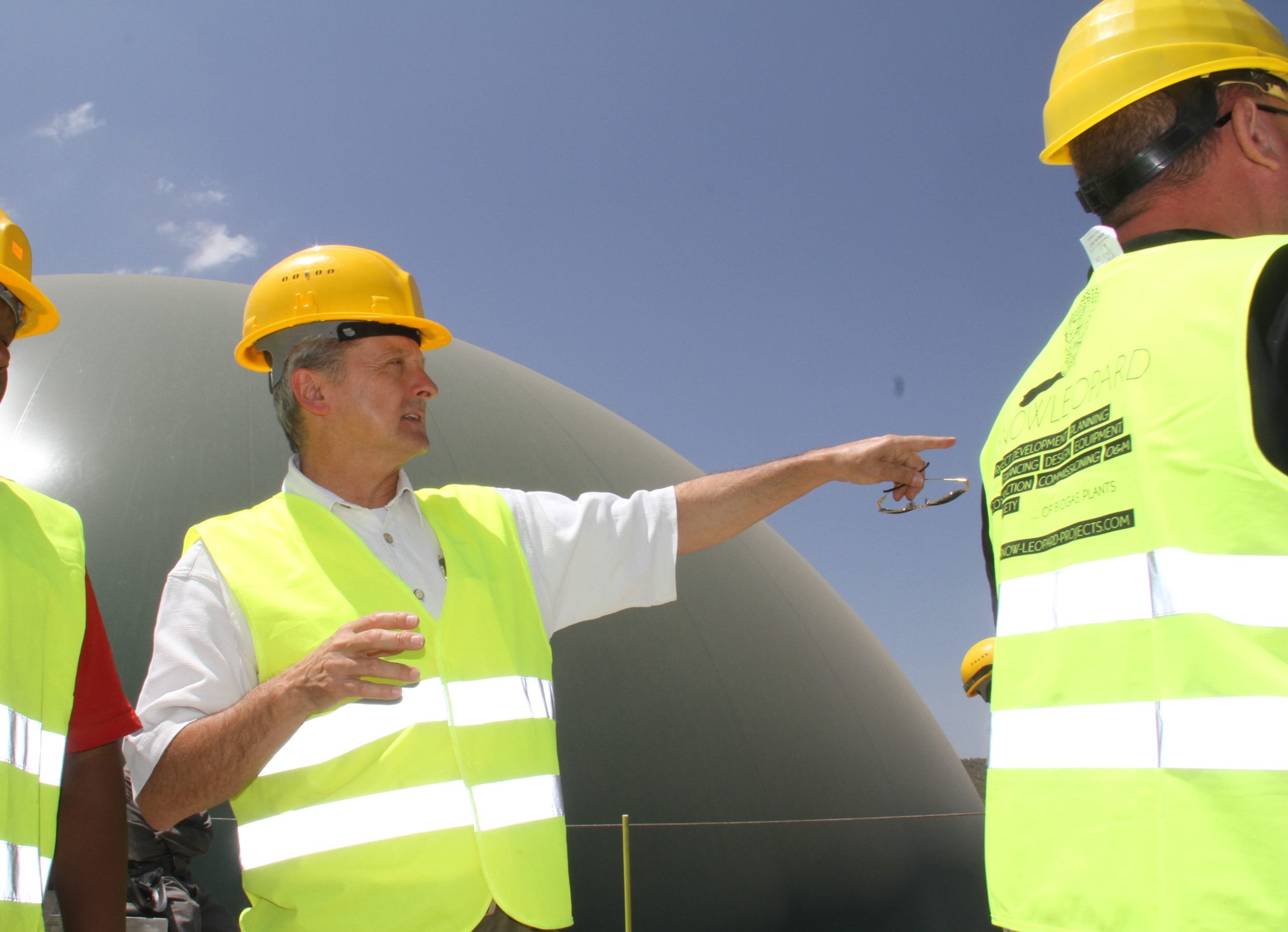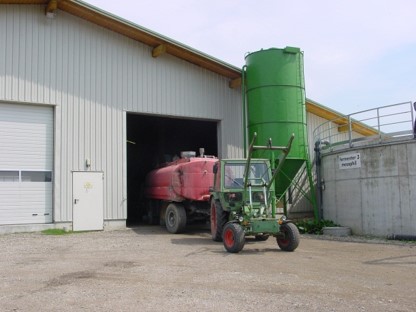How You select the right Biogas Technology for Napier Grass Digestion
7 QUESTIONS YOU NEED TO ASK, BEFORE YOU INVEST IN A NEW PLANT
This will be a practical guide to help you to engage in the proper planning process to make the smartest decisions regarding your biogas investment.
No test drive possible!
You only know, if you made the right choice, after you invested millions

After one or two years you know whether your decision was right or wrong. You can’t have a test drive as with a car. If the new toaster has a malfunction, you go to the shop and give it back or replace it. Not with a biogas plant.
A biogas plant is like a house or a ship. Once built, you have it. To correct something is costly. Therefore, you go to an architect for a house, if you want a house. You don’t go to a road builder. If you want a cargo ship, you go to the cargo ship wharf. Not to the cruise ship wharf.
You are not sure who is the right partner for the development, construction and operation of your biogas plant.
There is unlimited information about biogas in internet, brochures and books. This is overwhelming. The problem is what information is relevant. The problem is the right selection. Even for an expert it is difficult to select the right information. This needs years and years of practical experience. It often you don’t know what is important and what is unimportant.
Ask the 7 questions below and select the right biogas technology.
And Find Your Way through the Information Jungle from Feedstock, Digestion to Fertilizer Usage with answering the following questions. ”
The essence of the last 25 year is this practical guide with 8 Key Questions to ask before investing in a successful biogas or biomass projects.
This is even more important in countries that have no developed biogas industry like Germany.
And even in Germany more than 90% of the biogas plants can’t digest fibrous feedstock. They are designed for maize silage, the easiest feedstock for a biogas plant.
You have to get proper answers to these 8 questions when choosing your technology partner for your Napier Grass Biogas Plant Project to ensure your project success for the next 20 years.
1
Have you carefully defined the 8-11 project steps from feedstock planting to digestate usage?
The biogas plant itself is only one part of the chain to realize success and profit. If you fail with one of the chain links, you jeopardize your profit.
You and your design partner should think through all of the steps carefully in the project development phase and include sufficient buffers of time and money. (read more…)
Imagine heavy monsoon rain. The harvester cannot harvest napier grass for days. Is there enough feedstock storage space at your biogas site? This is just one example of how the whole process chain has to work from feedstock to generated kilowatt-hours.
2
Does your Technology Partner or your Engineering Team have enough practical experience and sophistication with fibrous feedstock or with Napier grass?
Many biogas salespeople brag about the many production plants their company has built. But if they only built biogas plants for maize, pig slurry or POME, their experience does not fit.
Napier grass is a whole different game. In looking at the plant, you will see that the bottom of it is woody. The whole plant is fibrous.
If you build a napier grass plant, look for an expert in fibrous feedstock.
3
Does your technology provider ensure Long Term Service, Backup and a stable Network for Service?
You need a stable and reliable backup, as well as long-term service.
Experience shows that the maximum resilience comes from a big network, not from a single player.
Build your project on a network. A network stands on many feet. If one foot breaks away, the others carry the load.
Network and decentralization provide long-term stability.
After the biogas boom in Germany 2009-2011 with 9,000 biogas plants built, the government cut subsidies. The next day the market collapsed and some of the biggest players with hundreds of employees went bankrupt. Most of the small companies and engineering teams adapted to the situation, pivoted and still exist. Their advantage was they had no overheads, but huge networks, whereas the big companies were torn down by their large overheads.
4
Do you or your technology partner know how to set up your biogas plant for easy operation?
A biogas plant must be designed for ease-of-operation, fast repair and regular maintenance to guarantee a smooth-running system.
Operation is one key success factor. The best Formula One car will only win if it also has the best driver.
Do you know how to make it easy for your operator to do his job? Only if the operation is easy, the operator will do a good job, helping make the process profitable.
Downtime of a biogas plant is very expensive. Time lost is money lost.
Does the technology partner plan on cheap ladders or stairs and platforms?
With stairs and platforms, the visual control is easy. With ladders it is a daily burden for the operator. No operator will do it daily.
Make one mistake in operation and the losses will be higher than the saving in the investment
Where is my roof? Charlie, a UK operator, said to the investor when seeing the finished plant. What he meant was that he had to do the daily digester view checks in the open air – whether it rained, at hot 40 ° C, heavy wind or even freezing snow. The roof was sacrificed to lower CapEx. Do you really think Charlie will do the daily checks properly when it is sweltering or when there is a thunderstorm?
5
Can the biogas plant you are planning achieve more than 8,000 full load hours?
With a biogas plant, for 80% of the operation time (which is 7,000 full load hours [FLH] of the CHP), you will be covering the costs. It is with an additional 1,000 FLH that profits are made. High profits. Up to 25% IRR.
The year has 8,760 hours. Profit starts above 7000 FLH And each additional FLH increases the profitability of your plant.
In order to achieve at least 8000 full load hours, you need to know how to build redundancy, flexibility and reliability into your plant.
Example: Hans, a German Snow Leopard operator, achieved more than 8700 FLH over the last 11 years, because he planned carefully in the beginning.
6
Does your technology provider or your engineering team look at the OpEx & CapEx or only CapEx?
CapEx has a lot less influence on profit than OpEx, when you look at the lifetime of your biogas project.
In countries with low salaries, OpEx is normally not as important as in industrialized countries with higher salaries. That is why a look at the lifetime OpEx is often neglected. This is not the case with biogas.
If you save on the quality of mixers, for example, you may save some in CapEx. But cheap mixers wear out faster, consume more electricity and have more downtime.
Better mixers cost only 20% more. This is nothing in comparison to the losses. The downtime costs you much more than a better mixer.
Plus you will replace a better mixer after 10 years of use, instead of after 3 years.
Do not focus on CapEx only, and don’t let yourself be tricked by sales persons focusing on low CapEx . If you save on CapEx at the wrong place, you will increase the OpEx and topple your profits!
The latest customer whom we consulted in optimizing his biogas plant chose a cheaper mixer and saved about 15,000 EUR. That was 10 years ago. For 10 years now, he has not been able to feed enough material into the tank and loses about 20% of his CHP capacity. That is a loss of 160,000 EUR per year. He did not care because he had made some profits. But he still could have made 1.6 Mio EUR more!
He only focused on the CapEx and missed the bigger picture.
7
Do you, your technology provider or your engineering team know how to adapt the technology to the hot and humid conditions in tropical countries?
Running a biogas plant with napier grass in a tropical country creates specific problems. Particularly, engines wear down faster, because they suffer from high temperatures.
A CHP should run 8,500 and more full load hours. Only an additional package for tropical conditions guarantees a long-life operation with minimal downtime for maintenance. However, it costs € 50,000 more. But it pays back. One day’s revenue of a 3 MW biogas plant is 12,000 €. This is only 4-5 days downtime (?) To cover the 50,000 €.
An even bigger problem can be the speed in which napier grass decays in tropical climates, so you need to know exactly how to keep the chain of supply very short and very stable.
With higher temperatures in tropical countries, biological processes run faster than in Europe. As with fruits that immediately red and smell when left in the open, the same happens to napier grass. Immediately after the harvest, napier grass starts to decay. It becomes warm and this means energy loss and biogas potential loss.
Experience from Germany with moderate temperatures show that maize loses up to 20% of its biogas potential. This means 20% more feedstock is needed! And 20% more costs! And 20% less profit!
With an efficient feedstock logistic you can avoid these losses.
Only practical experience in various countries provides safe investments.
1995 – I had the same problem – but no one was there to help me
I had a big contract for biowaste digestion in hand. But no technology. Nothing was available on the market. Only farm biogas plants with farm equipment.
I needed a heavy-duty biogas plant with all the sand, stones, bones, metal, wood, plastic and everything else in the biowaste – my feedstock.
And only slurry farm biogas technology was available. Easy to mix. Easy to pump. No sorting. No impurities.
I had to develop my own process, my own technology – from the scratch.
I learned it on the hard way.
I know how it feels not to know how it works.
25 years later and a lot of problems and solutions later, I know exactly how to handle the most difficult, fibrous feedstock.


